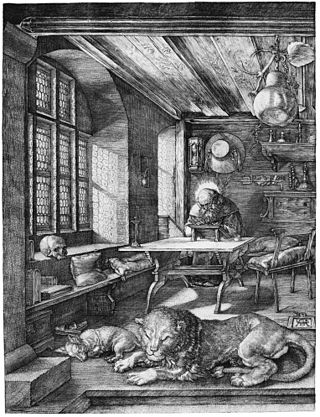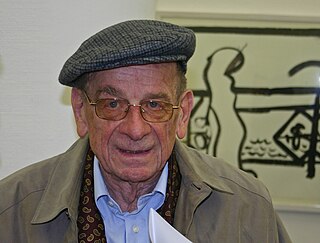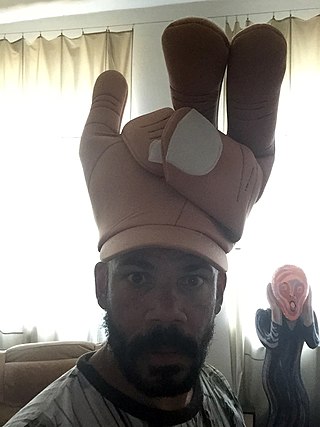Gregor Schneider is a German artist. His projects have proven controversial and provoked intense discussions. In 2001, he was awarded the Golden Lion at the Venice Biennale for his infamous work Totes Haus u r exhibited at the German Pavilion.

The Staatliche Graphische Sammlung in Munich (München), Germany, is a large collection of drawings, prints and engravings. It contains 400,000 sheets starting from the 15th century from various artists around the world. Along with Kupferstichkabinett Berlin and Kupferstichkabinett Dresden, it is the most important collection of its kind in Germany. It is owned by the government of Bavaria and located within the Kunstareal, a museum quarter in the city centre of Munich.

The Kupferstich-Kabinett is part of the Staatliche Kunstsammlungen of Dresden, Germany. Since 2004 it has been located in Dresden Castle.
Elmar Hess is a German artist.
Pontus Carle is a contemporary artist living between Paris and Berlin.
Max Uhlig is a German painter. He won the Hans Theo Richter-Preis of the Sächsische Akademie der Künste in 1998.
Werner Wittig was a German painter, engraver and printmaker. He won the Hans Theo Richter-Preis of the Sächsische Akademie der Künste in 2000.

Dieter Goltzsche is a German painter and graphic designer. He won the Hans-Theo-Richter-Preis of the Sächsische Akademie der Künste in 2010.

Nanne Meyer, is a German artist. She is one of the first women artists of the postwar generation who works primarily in drawing. Meyer lives and works in Berlin.

Marc Brandenburg is a German artist.
Hana Usui is a Japanese artist.
Karsten Konrad is a German abstract sculptor.
Kathrin Sonntag is a visual artist who works in photography, sculpture, film, and installations. Her work has been exhibited in museums including the Kunstverein in Hamburg, Germany and the Solomon R. Guggenheim Museum in New York City.
Sabine Hornig is a German visual artist and photographer who lives and works in Berlin. Her work in photography, sculpture, and site-specific installation art is known for her interpretations of modernist architecture and contemporary urban life. Her work has appeared in solo exhibitions throughout the world, including Double Transparency at Art Unlimited Basel in Switzerland (2014) and Projects 78 at the Museum of Modern Art in New York (2003), and in numerous group exhibitions at institutions like the J.Paul Getty Museum in Los Angeles and ICA London.

Aatifi is a contemporary Afghan-German painter, printmaker and calligrapher. He was born in Kandahar, Afghanistan. He lives and works in Bielefeld, Germany. His works contain abstracted Arabian calligraphy and modern European influences.

Laura Bruce is an American contemporary artist living in Berlin.

Johann Heinrich von Heucher was a German physician and botanist.

Luzia Simons is a Brazilian visual artist, living in Berlin. Simons has exhibited her work internationally, including a solo exhibition at the Pinacoteca do Estado de São Paulo in Brazil. Simons is a pioneer in the development of the scanogram—a media technique that combines elements of painting and photography.
Carl Heumann was a German art collector persecuted by the Nazis because of his Jewish origins.









